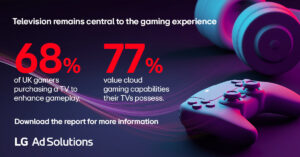The Australian View is an interview series with Australians working in the digital media and marketing industry, celebrating the people from Australia helping drive our industry to even higher levels of innovation and creativity. Today we speak with Simon Larcey who has split his career between the UK and Australia.
Tell us your story. How did you arrive in this role?
I was actually working in an AdTech start-up called Path51. The tech identified when specific TV ads were playing and would launch second-screen campaigns on Facebook to try and capture the viewers attention. We started to do an integration with programmatic advertising and I started to learn all about programmatic. It annoyed me that media owners’ inventory was being traded as a commodity and that the amount of money each media owner got was hugely diluted from the actual spend. I thought it was rough and I wanted to help media owners make more money. In my previous life, I had a media business for the expat community in London. I ran that business with famous Aussie expat Clive James. I decided to build a trading platform that connected advertisers directly to media owners removing all the intermediaries. Initially, we launched as a marketplace and added hundreds of vetted sites into the marketplace. As the business evolved it became obvious that advertisers preferred buying direct from the media and not through a marketplace – so we changed direction slightly and became more of a software provider building self-serve platforms for media owners.
Where does Viztrade sit in the ecosystem
There are a number of players in the self-serve space. Or rather a number of companies that have a self-serve solution. As far as specialists in the space, I would say there are only a few, Viztrade being one of them. Whilst we are not as big as the market leader, our platform is world-class and works across all media formats. We are also moving into the commerce media space and creating walled gardens for transactional businesses. We have a sales resource and tech support in the UK but the core team is in Geelong Australia and they are genuinely amazing. My development team are expert in solving problems, understanding technical briefs and working fast.
Does self-serve work for all media owners?
I think anyone with a big enough audience would benefit from a self-serve proposition. The first question everyone always asks is “how do we drive demand?”. So would it work for every media owner? Yes if the audience is big enough and the media owner understands launching a self-serve platform is more of a marketing job as opposed to a technical job. We have guides and a framework we share with our platform partners to give them the best chance of success. Later this year we will be launching a service offering where we will sell and market a partner’s inventory – performance media for media companies. Once you have the platform implemented, self-serve revenue is the most profitable revenue you can earn. It’s direct, involves little or no resources and is collected via credit card so it also helps with cash flow.
Tell us about the media business in Australia. How does it differ from the UK
Its an interesting time in media in Australia. You have to remember we are an island on the other side of the world so one would expect there to be a lot of differences but strangely its similar. Media is a global business and I think all media operators are facing the same challenges. Newscorp Australia, Nine and Seven have recently made huge redundancies across the complete workforce. Highly paid middle management executives are out and there is a lot of consolidation. Australia managed to get the news bargaining code through the government which made the likes of Meta and Google pay the news providers for their content. Meta has now pulled out of this agreement and in threatening to pull out of Australia completely unless a more sensible solution is devised. Commerce media and connected TV is really starting to gain traction and the popularity of podcasts is huge. The two biggest radio networks are trying to buy each other out and brand spend is down on last year. On the flip side – digital media spend is growing and Meta, Google and Amazon are taking the bulk of the spend. Australia tends to use legacy AdTech and watch what the rest of the world is doing before adopting new technologies. We’ve had some innovative tech developed in Australia but the market is so small they tend to make their money in other markets.
How do you see the future of media in Australia. What should be looking out for
I think there is going to be more consolidation. With the constant increase in media options available, traditional media operators have a tough time ahead. The recent job cuts in my opinion are only the start. These businesses need to run a lot leaner and need to develop new revenue models. I’m seeing a lot of transactional companies wanting to launch an ad business and I am seeing a lot of ad businesses wanting to launch commerce. Are Media (formally Bauer Australia) have links to e-commerce on all their articles now. Some of the most trusted media brands in Australia are ripe for commerce. I don’t see printed papers being around after the next decade. You may see smaller papers that local communities rely on, stick around but I am confident that national news will be all digital. I think more people will expect to buy media the way they can on Meta, Google and Amazon so self-serve is a must for any serious media player. I think we should look at the next wave of innovation for targeting audiences around the web. Even with third-party cookies sticking around, it has always been a poor way to target and I think brands and marketers are getting smarter. I truly believe more weight will be pushed towards context and smart ways of using contextual targeting should be pursued.








